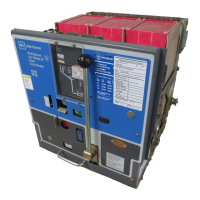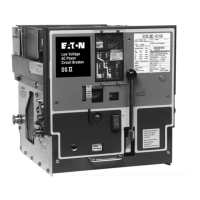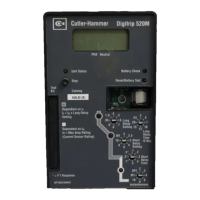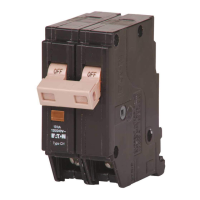Page 32
1.8. 33-790-11
8
I
L_
- c:=:=-=t=:::::'.I
L-------18
a) Shutter in Normal Position,
1i'ip
Plate
in
Untrip-ped
Position
1.
Shut111r
Push Tab
2.
Shuttw
3. Levering Device Worm
Shaft
4.
Shutter
L.cmer
Projection
5.
Shuner
Pivot Pin
6.
Shutter
Interlock Pin
7. Pole Shaft
8.
Levering Device
Sheft
9.
Trip Shaft
10.
Trip Shaft Pin
11.
Tripping
Tab
12. Trip Plate
L__
13. Trip Plate Hook
14. Lavering DllYice Crank Handle
b)
Shutter Down, Trip Plate Held in Tripped Position
Fig.
28 Relation
of
Shutter,
Trip
Plate, and
Trip
Shaft
Figure 29d shows the REMOVE position. Here the inter-
lock cam stops with the shutter interlock pin blocked.
Thus the shutter stays down and the breaker stays
tripped when the crank handle is removed. The breaker
is held trip-free, so it cannot be closed. Also, by another
interlock described later, the close-release latch cannot
be released.
5.1.8.1
Spring
Discharge
Interlock
1.
The purpose
of
this interlock is to operate the
close-release latch as the breaker is moved out
beyond TEST position. This causes a trip-free opera-
tion
of
the closing mechanism because it occurs
while the levering device crank handle is necessarily
still on the worm shaft, and the closing springs are
charged if the breaker is electrically operated. This is
Effective October 1998
Courtesy of NationalSwitchgear.com

